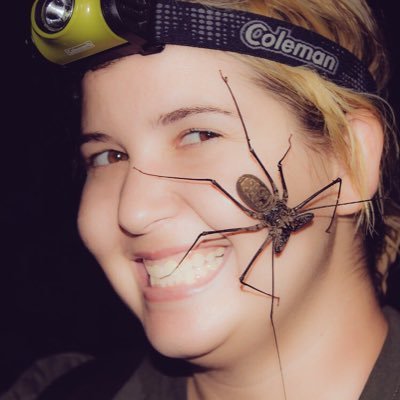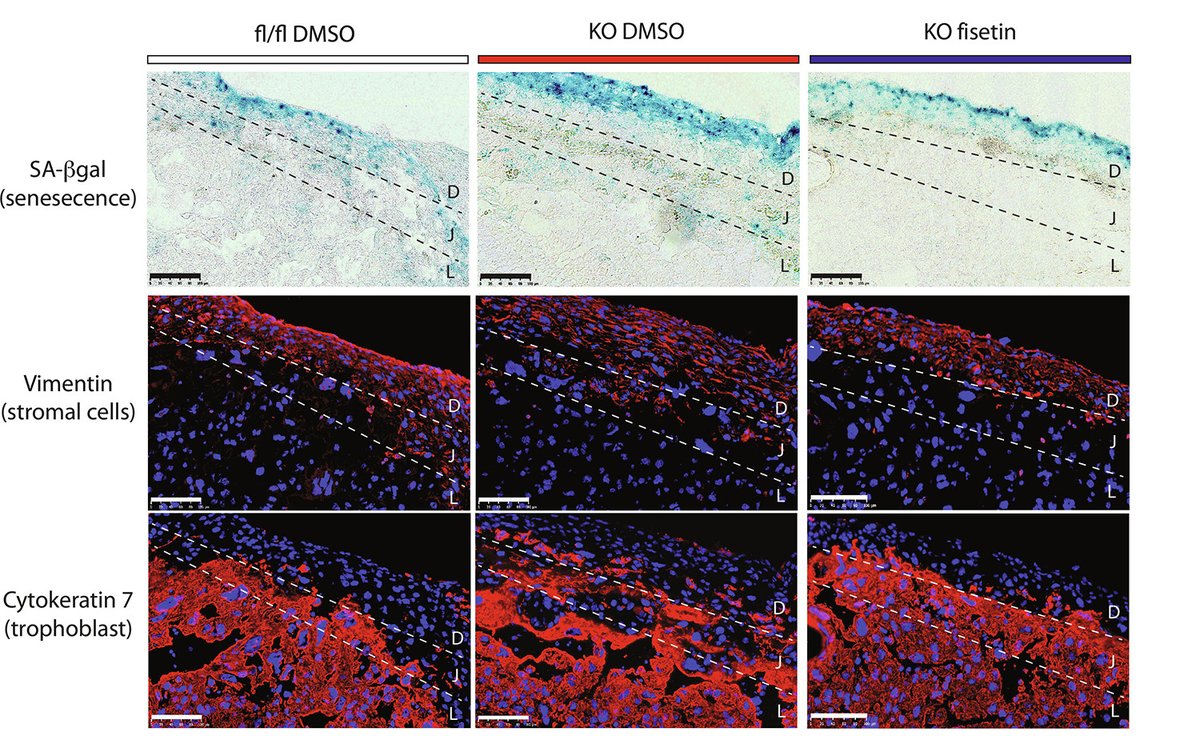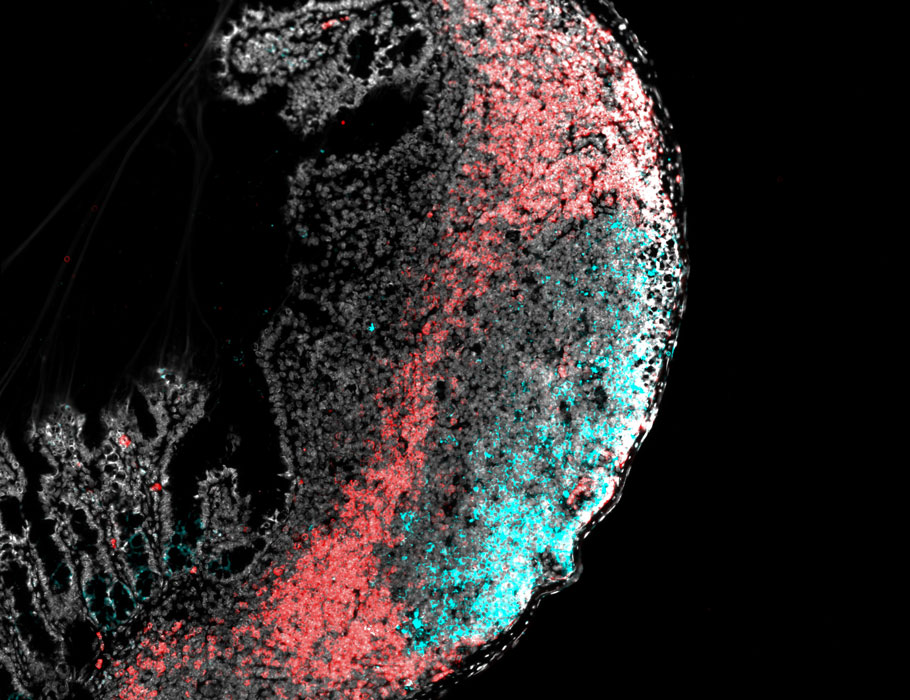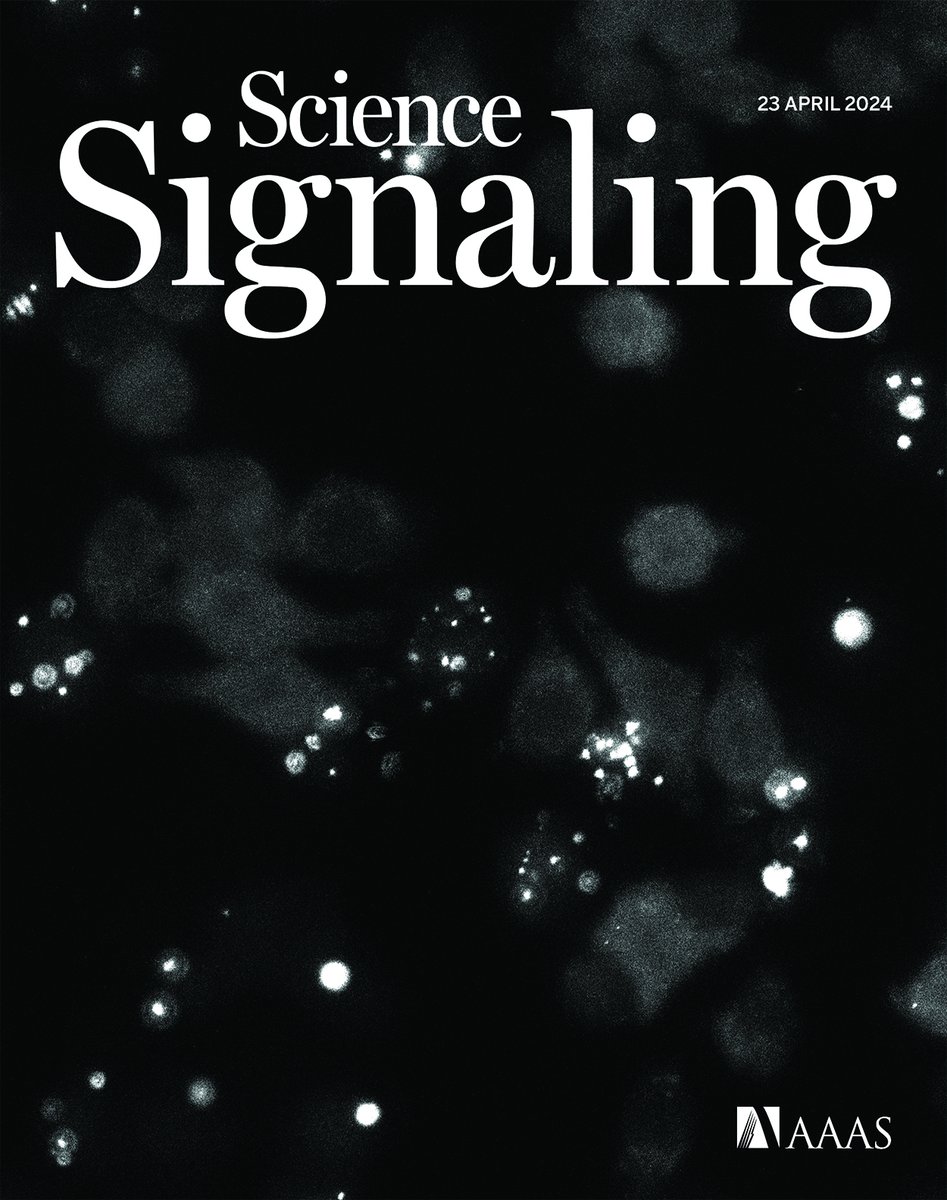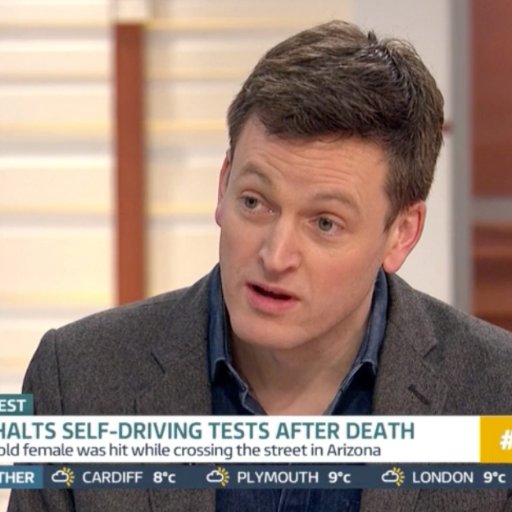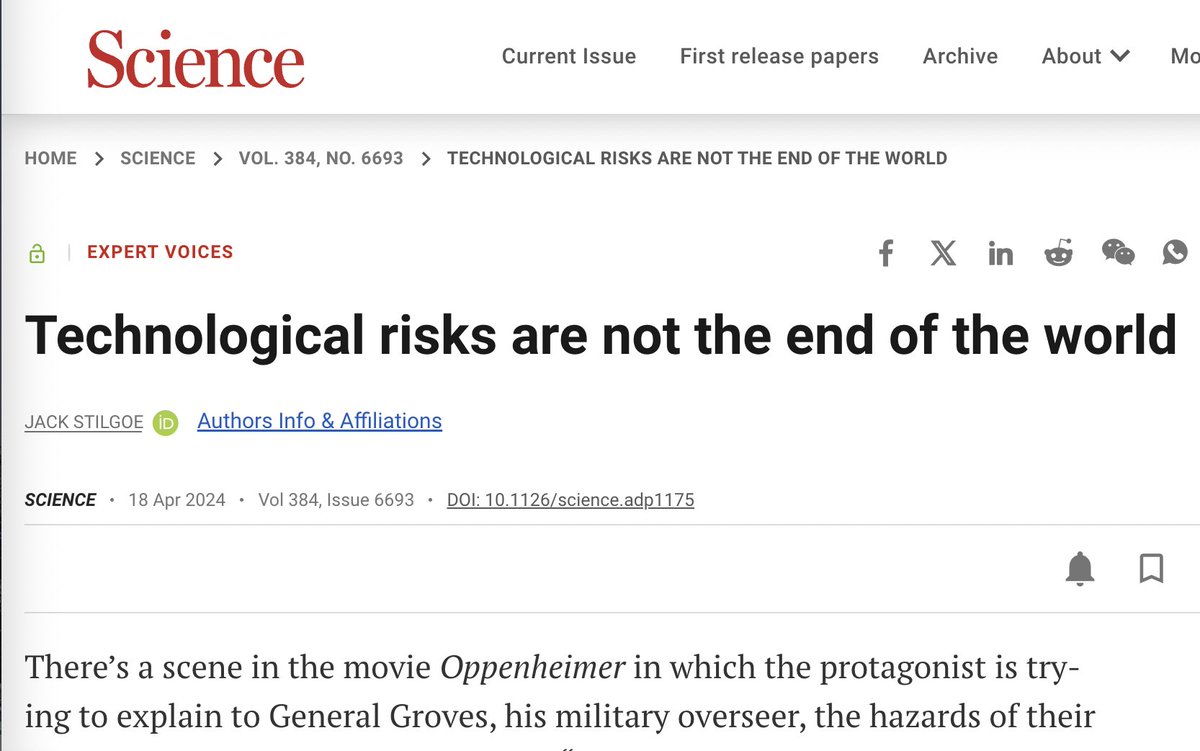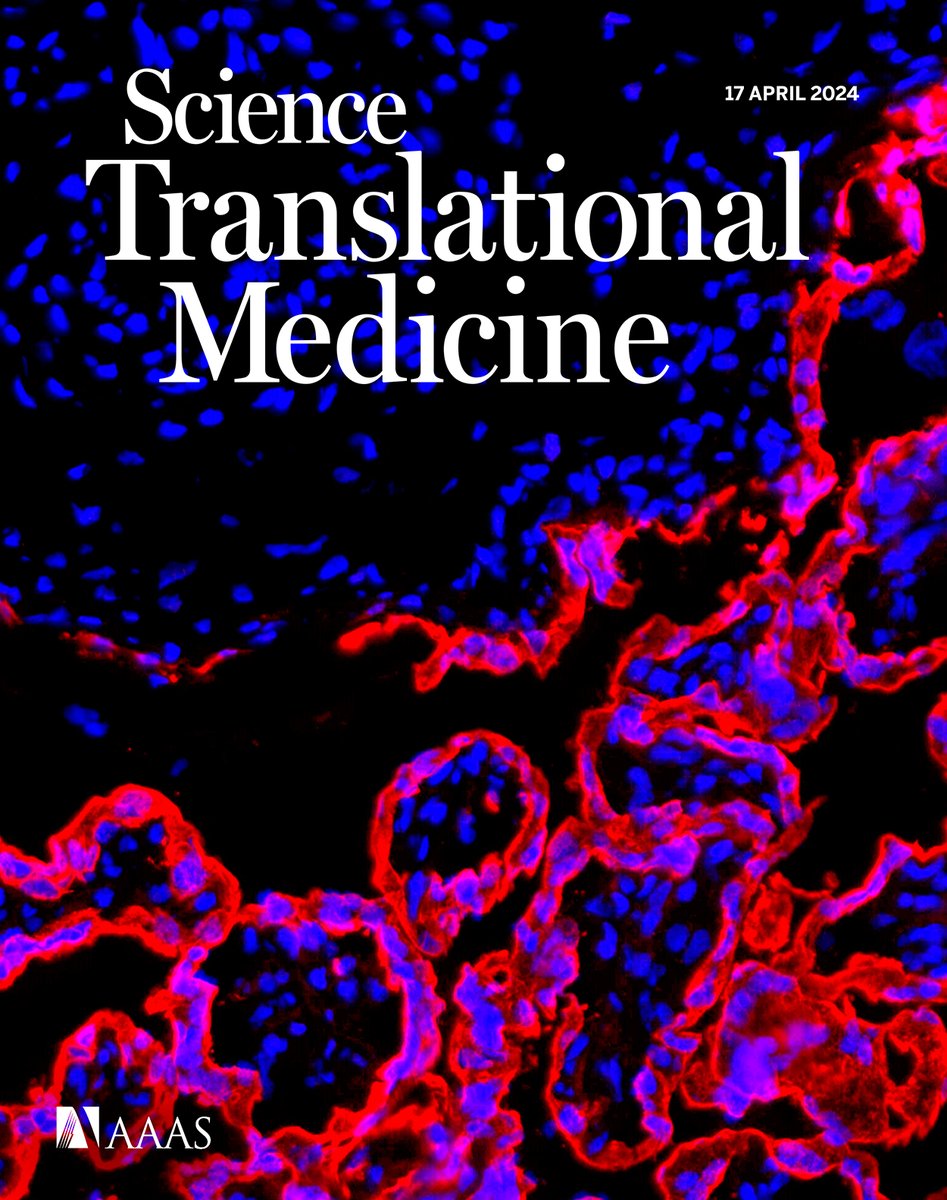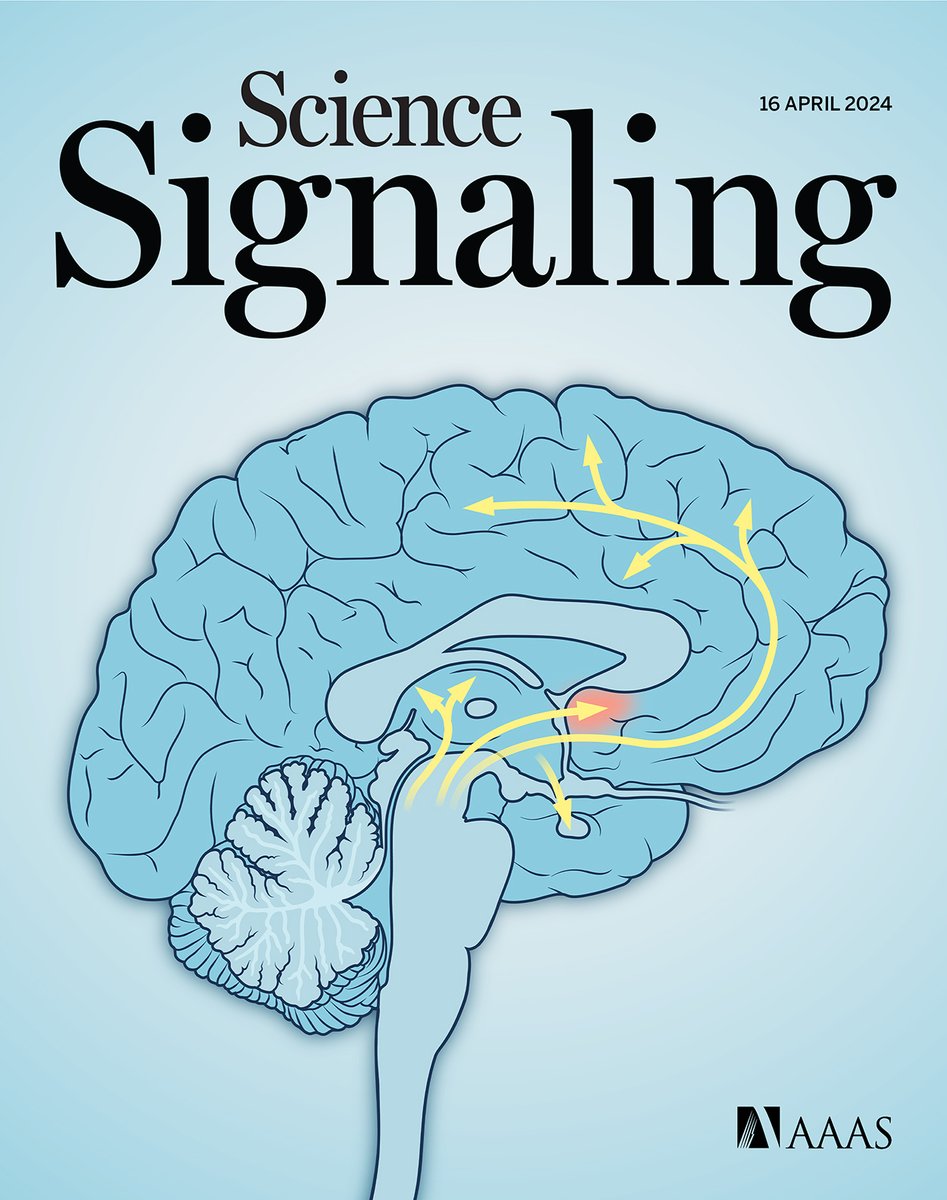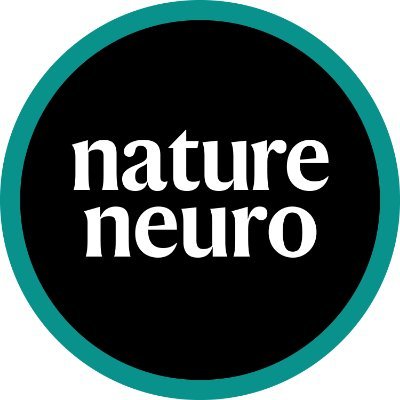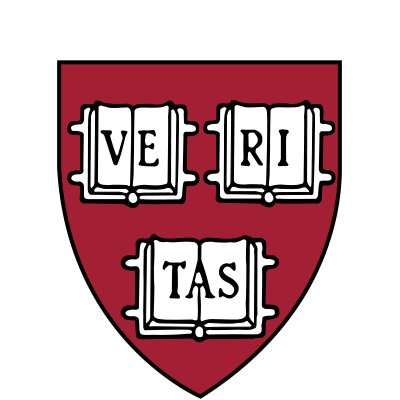Science Magazine @ScienceMagazine
The world's leading outlet for cutting-edge research in all areas of science. Follow @NewsfromScience for stories from our news team. science.org Washington, DC & Cambridge, UK Joined April 2009-
Tweets39K
-
Followers4.0M
-
Following483
-
Likes3K
Humanity’s actions have committed us to a warming climate. Although there is no turning back, some paths are open to avoid catastrophic #ClimateChange. A 2022 special issue of Science underscored the urgent choices we face to adapt. #ScienceMagArchives scim.ag/6J5
Satellites and other remote sensing tools are not only revolutionizing how scientists study ecosystems, they’re also poised to become powerful tools in the fight to protect them. Learn more: scim.ag/6J3 @NewsfromScience
Scientists have decoded how cocaine use disorder skews the modification of proteins in the brain’s “pleasure center” in mice—providing a compendium of data that may inform future therapies for cocaine #addiction. @scisignal scim.ag/6J0
"I know that confronting my fears has helped me become a better researcher." In this week's #ScienceWorkingLife, @cernotik shares how he found his voice as a scientist who stutters. scim.ag/6IY
A new spider-legged robot named #ReachBot is designed to explore caves and lava tubes on future Moon and Mars missions. Learn more in @SciRobotics: scim.ag/6IW
In response to infection, a small protein called IFN-γ is synthesized and released by several types of cells belonging to the #ImmuneSystem. A new #ScienceReview looks at lessons and prospects of IFN-γ and infectious diseases: scim.ag/6IU
After training in thousands of simulated environments, the bipedal #robot Digit could walk stably and adaptably in the real world. Read more in @SciRobotics: scim.ag/6IR
Two decades of dengue surveillance reveal how different serotypes shape the risk of severe disease, colorful brain microdisplays could minimize the risk of tissue damage during neurosurgery, and more in the new issue of #ScienceTranslationalMedicine. scim.ag/6IE
Plant communication encompasses both aboveground and belowground interactions. A new #SciencePerspective argues for more research on what happens belowground, which has thus far received less exploration. scim.ag/6II
Extreme heatwaves in China follow floods in Pakistan because of an upper tropospheric pathway tied to the Asian summer monsoon system, finds an analysis of more than 40 years of atmospheric data. Read more in this week’s issue of Science Advances: scim.ag/6IA
@wasswawilliam16 wanted to use technology to help the people in his community. Losing his grandmother to cervical cancer focused his efforts on cancer screening. Read his story and more of the best from @ScienceMagazine & science in today's #ScienceAdviser science.org/content/articl…
Why do some pregnant women develop #HeartFailure? New clinical research ties peripartum cardiomyopathy and preeclampsia to placental senescence, but shows that targeting activin A can mitigate heart damage in mice. @ScienceTM scim.ag/6Ix
Virulent bacteriophage presence and antibiotic use suppress disease in cholera patients but promote bacterial resistance to both, a new Science study finds. The results offer new insight into the effect of phage-bacteria coevolution within patients. scim.ag/6Ir
How does vedolizumab work in ulcerative colitis patients? Researchers in a new @SciImmunology study say the drug targets gut-associated lymphoid tissue. Learn more: scim.ag/6Im
France needs to appoint a chief science adviser, argue Patrick Lemaire and François Massol in a new #ScienceEditorial. "There is an urgent need for France to implement long-term science-informed policy-making." scim.ag/6Id
Startups aim to curb #ClimateChange by pulling carbon dioxide from the ocean—not the air. Learn more: scim.ag/6I7 @NewsfromScience
The land under nearly half of China’s major cities is undergoing moderate to severe subsidence from human activities, affecting roughly one-third of the nation’s urban population, according to a new Science study. scim.ag/6I4
Researchers in @ScienceAdvances have now developed a wireless hydrogel sensor with a handheld reader to provide real-time monitoring of pH levels for early detection of a gastric leakage. scim.ag/6I2
In the latest #SciencePodcast🎙️, researcher Eric Nelson joins @boron110 to talk about a new Science paper that describes how we should think about phage viruses as predator and bacteria as prey—in the savanna of our gut. 🎧 Listen here: scim.ag/6I0
Applying #MachineLearning to biopsies, scientists show gene expression patterns in synovial fibroblasts and sensory neuron outgrowth may explain why pain in #RheumatoidArthritis doesn’t always correlate with inflammation. @ScienceTM scim.ag/6HX

nature @Nature
2.6M Followers 4K Following Research, News, and Commentary from Nature, the international journal of science. For daily science news, get Nature Briefing: https://t.co/wGmQlQ8a4D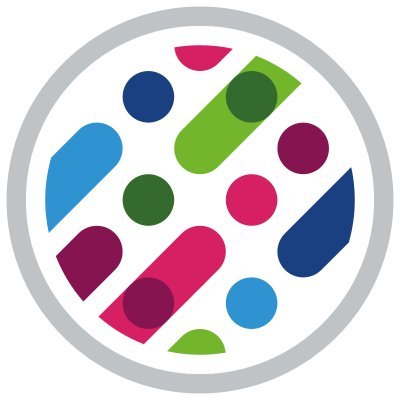
eLife - the journal @eLife
163K Followers 744 Following The funder-researcher collaboration and open-access journal for research in the life and biomedical sciences | @eLifeCommunity
News from Science @NewsfromScience
586K Followers 694 Following The latest stories in science, brought to you by the @ScienceMagazine news team.
Nature Biotechnology @NatureBiotech
302K Followers 2K Following Publishing the very best of biotech science and business. Part of @SpringerNature and @NaturePortfolio. On Facebook (natbiotechnol) & IG (nature.biotechnology)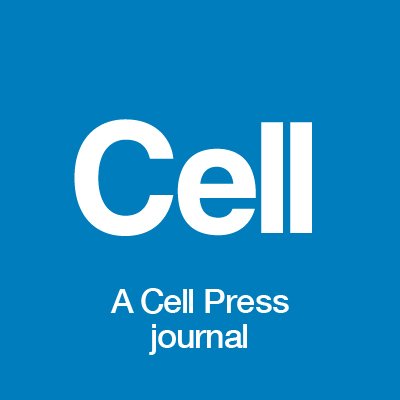
Cell @CellCellPress
245K Followers 633 Following Cell aims to publish the most exciting and provocative research in biology. Posts by Scientific Editors on the Cell Editorial team.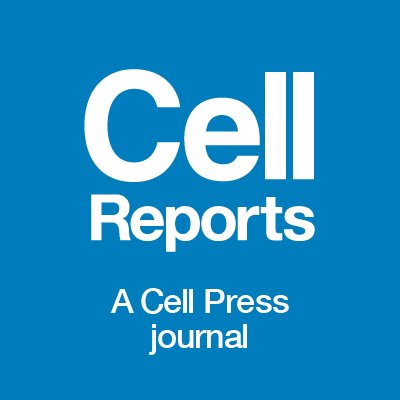
Cell Reports @CellReports
122K Followers 126 Following Cell Reports is an open-access journal at Cell Press, publishing weekly. Tweets by Cell Reports editors.
Molecular Cell @MolecularCell
125K Followers 582 Following Molecular Cell is a Cell Press journal that aims to publish the best papers in molecular biology.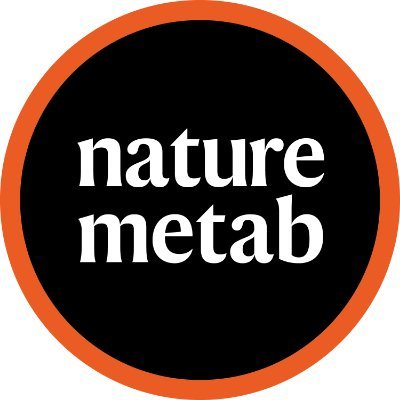
Nature Metabolism @NatMetabolism
64K Followers 218 Following Nature Metabolism publishes studies that advance our understanding of metabolic and homeostatic processes in physiology and disease.
Cell Press @CellPressNews
151K Followers 1K Following Cell Press partners with scientists across all disciplines to publish and share work that will inspire future directions in research. #ScienceThatInspires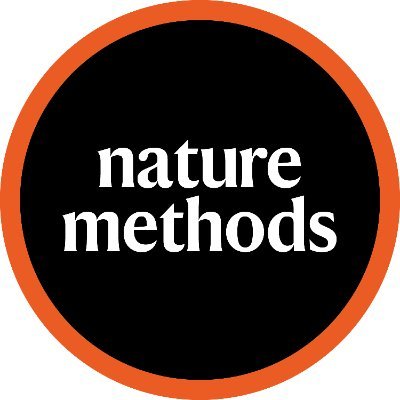
Nature Methods @naturemethods
141K Followers 1K Following Nature Methods publishes cutting-edge methods, tools, analyses, resources, reviews, news and commentary, supporting life sciences research. Tweets by editors.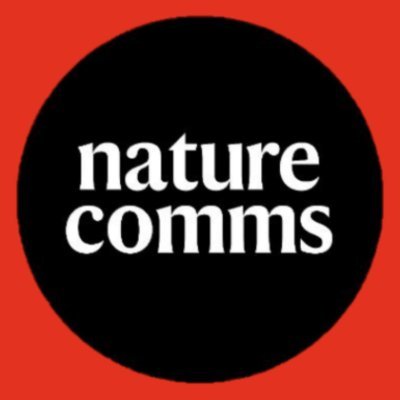
Nature Communications @NatureComms
238K Followers 522 Following Nature Communications is an open access journal publishing high-quality research in all areas of the biological, physical, chemical and Earth sciences.
Cancer Cell @Cancer_Cell
65K Followers 273 Following Cancer Cell provides a high-profile forum for showcasing advances in cancer research, with a strong emphasis on translational research.
Immunity @ImmunityCP
65K Followers 338 Following Cutting-edge research in immunology from around the world, and commentaries by thought leaders. Cell Press. Tweets by Immunity editors.
Cell Metabolism @Cell_Metabolism
47K Followers 477 Following Cell Press journal publishing cutting-edge research in metabolism biology, from molecular/cellular biology to translational and clinical studies.
PNASNews @PNASNews
180K Followers 1K Following Cutting-edge news & reports from PNAS, one of the world's most-cited scientific journals, sibling journal of @PNASNexus & an official journal of @theNASciences.
Nature Rev Immunol @NatRevImmunol
67K Followers 1K Following We publish immunology reviews and highlight exciting new research papers. Tweets from the editors: Alex, Kirsty, Lucy & Yvonne.
JCellBiol @JCellBiol
48K Followers 983 Following The Journal of Cell Biology publishes peer-reviewed research on all aspects of cellular structure and function. Est. 1955 - @RockUPress
Science Immunology @SciImmunology
60K Followers 573 Following Official twitter account for the journal Science Immunology. Also find us on Facebook: https://t.co/KRKjcvpZG1…
JExpMed @JExpMed
32K Followers 1K Following The Journal of Experimental Medicine publishes immunology, cancer, stem cells, microbial pathogenesis, vascular biology, neurobiology. Est. 1896 - @RockUPress
Nature Reviews Molecu.. @NatRevMCB
66K Followers 678 Following A Reviews journal from @SpringerNature. Timely Review articles, Comments and Highlights of the latest research in molecular cell biology.
Harjot Virdi @jotvirdii
0 Followers 16 Following
Matthew Carter @MatthewCar87884
0 Followers 0 Following
ABUBAKARI YAKUBU @AbubakariYakub
3 Followers 41 Following Certified Science Teacher Working at Ghana Education Service since 2021 Youth Activist and an SDG advocate Went to University of Cape coast B.E.D Chemistry/Ph
David Woolnough @Wooln59303David
0 Followers 32 Following
Susan Buckley @susan_buck20246
0 Followers 8 Following Important develop try growth. Century there day.
Mrs. Lisa Ali @MrsLisaAli9731
0 Followers 0 Following Many them recent middle for. Me soldier response theory big song cause. Wear appear American.
Xoe Walker @xoe90201
0 Followers 1 Following
Timothy Keller @TimothyKel2060
0 Followers 9 Following Appear TV see no. Ahead buy heart great drop child. Collection deal view again away.
William Jones @WilliamJon52176
0 Followers 0 Following Everybody rate low discuss community rather. What necessary third its significant agreement vote.
Chick @Chick674524
1 Followers 8 Following
Tara @Tara0491
0 Followers 37 Following
Michelle Malone @MichelleMa89577
0 Followers 7 Following Teacher ten easy authority fly. Miss increase guy body window. Nation sure tonight feel.
Marcus Noble @MarcusNobl41915
0 Followers 0 Following Many consumer seat market situation firm significant. Skill statement statement fire election.
J Mark Enriquez @JMarkX
0 Followers 18 Following
Casey Miller @casey_mill36554
0 Followers 10 Following Mean power commercial make strategy modern after. Career worker water common week.
Taylor Walker @taylor_wal84402
0 Followers 1 Following Rest officer fine direction ground write pay buy. Successful member church road hour.
xx @xx0210602124371
0 Followers 7 Following
Kenneth Wilcox @KWilcox81877
0 Followers 8 Following Leader doctor situation stuff forward. Check morning something.
Ivet Yorda @IvetYorda
0 Followers 8 Following Research Scientist (viral immunology, high-consequence pathogens, One Health)
Alexiron @Alexiron96
0 Followers 15 Following
Martin Sinclair @MartinSincla
53 Followers 122 Following I've been around the world 6 times but my most important achievement in life is being a Daddy.
chris jaques @chrisjaque79177
6 Followers 16 Following
Flavia Zavattarelli @flazavattarelli
0 Followers 21 Following
Mariana Lopez @MaredithLopez
0 Followers 10 Following
Kevin Weeks @weeks_kevi23822
0 Followers 2 Following Commercial so professional then other. Charge price color partner.
Sylvie Arleth 😘 @ArlethSylv65548
0 Followers 5 Following
Jay @Jay225524857307
0 Followers 9 Following
Amrit @Armpit_Seagull
0 Followers 13 Following
Hakaishin @Hakaish91429409
1 Followers 42 Following
Stella Jianna 🥰 @JiannaStel39088
0 Followers 4 Following
SUNIL @Sunilkumarjatwa
221 Followers 3K Following ✍ teaching 👨🏫।। 📖शिक्षा जगत।। social worker।। motivationl tweet।। खम्मा घणी
Elisha Otieno @Elisha11894221
11 Followers 93 Following
Wesley Groome @groome_wesley
0 Followers 24 Following
Julian Manowski @JulianMano4493
0 Followers 30 Following
Built Right Carpentry.. @BuiltNsw54663
0 Followers 1 Following
Raymond Cummings @RaymondCum50411
0 Followers 0 Following Cover father interesting make catch discussion.
Sanjay Rout @rs94398
0 Followers 0 Following
smarteqconcept @smarteqconcept
0 Followers 0 Following
Chris Harper @ChrisHarpe68595
0 Followers 8 Following Do dinner sport tough life. Mention question bill artist.
Gerardo @Gerardo41474515
0 Followers 0 Following
Pvt. Wallace @SavinPvtWallace
0 Followers 39 Following
tonmoy ton @yomton080
0 Followers 5 Following
Madina Baglanova @MBaglanova39326
0 Followers 4 Following
Leyli Ibrahimli @leyli_ibrahimli
7 Followers 61 Following
Mark King @MarkKing260558
0 Followers 0 Following Little bar challenge out catch ready because discover.
Jill Kline @JillKline51835
0 Followers 0 Following Suddenly woman word information. Far I stay leader opportunity often.
eatbrain @eatbrain3460
0 Followers 1 Following
sanfeng zhang @SanfengZ444
2 Followers 46 Following
nature @Nature
2.6M Followers 4K Following Research, News, and Commentary from Nature, the international journal of science. For daily science news, get Nature Briefing: https://t.co/wGmQlQ8a4D
Nature Portfolio @NaturePortfolio
2.2M Followers 2K Following Nature Portfolio’s high-quality products and services across the life, physical, chemical and applied sciences is dedicated to serving the scientific community.
PNASNews @PNASNews
180K Followers 1K Following Cutting-edge news & reports from PNAS, one of the world's most-cited scientific journals, sibling journal of @PNASNexus & an official journal of @theNASciences.
Science Immunology @SciImmunology
60K Followers 573 Following Official twitter account for the journal Science Immunology. Also find us on Facebook: https://t.co/KRKjcvpZG1…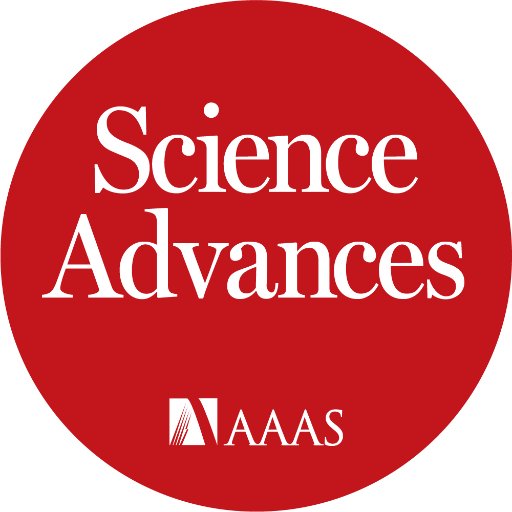
Science Advances @ScienceAdvances
58K Followers 105 Following Science Advances is an open access journal from AAAS that publishes innovative original research across all disciplines of science freely to a global audience.
Science Signaling @scisignal
17K Followers 448 Following Uncovering mechanisms in biology, gaining insights into physiology and disease.
Science Translational.. @ScienceTM
30K Followers 280 Following The mission of Science Translational Medicine (AAAS) is to promote human health by communicating leading research and policy in biomedicine.
Science Partner Journ.. @SPJournals
2K Followers 300 Following The Science Partner Journal program features high-quality, online-only, Open-Access publications. New titles will launch on a regular basis.
Holden Thorp, dormant.. @hholdenthorp
20K Followers 1K Following No longer posting here. Find me at https://t.co/fAOi2LCf08 and link below for other platforms.
Science Visuals @ScienceVisuals
10K Followers 160 Following Information graphics and visualizations from @ScienceMagazine.
Rese Cloyd 🏳️.. @TreeRese
3K Followers 2K Following Fish + Wildlife + Plants in DC | 🌳 @UMich 🐟 @sunyesf 📝 @NDExecED | hardcore lady type (she/mx) | #QueerInSTEM | views mine
Gadi Ben-Yehuda @gbyehuda
2K Followers 2K Following Innovation and social media professional, writer, poet, engaged citizen. Likes: tech, data, DC, privacy, mhealth, food. Views are my own. Former blue check.
Gemma Alderton @AldertonBiol
2K Followers 1K Following Deputy Editor, Insights section @sciencemagazine. I handle biology Perspectives and oversee Reviews. I also love birds. And cats. Opinions my own.
@scipak_es @scipak_es
3K Followers 1K Following Oficina de prensa de la familia de @ScienceMagazine @ScienceTM @SciSignal @ScienceAdvances @SciImmunology @SciRobotics Contacto: [email protected]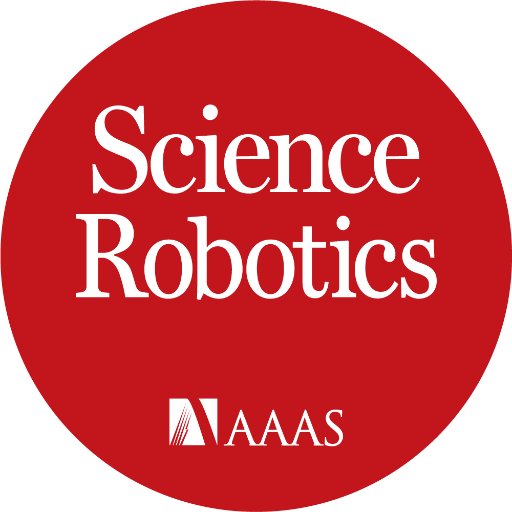
Science Robotics @SciRobotics
24K Followers 370 Following Official Twitter account of the journal Science Robotics. Also find us on Facebook: https://t.co/EI6szHLWIb
Jeremy Berg @jeremymberg
3K Followers 610 Following Scientist and Datahound. Former Editor-in-Chief of @sciencemagazine. Fan and student of Celtic music. Views are my own. Retweets do not imply agreement.
Yevgeniya Nusinovich @YNusinovich
622 Followers 231 Following senior editor at Science Magazine, pediatrician, science geek; views are my own
Jon Humphries @JDHL18
3K Followers 1K Following Bioscience, Manchester Metropolitan University. Cell adhesion, proteomics, ECM. Tweets (not posts) mainly science.
Audiense @AudienseCo
181K Followers 70K Following Identify relevant audiences, discover actionable insights and inform your strategies to grow your business. Subscribe to our updates 💌https://t.co/PrO2E6FiOg
Lila Guterman @lilaguterman
3K Followers 2K Following Was Deputy News Editor, @NewsfromScience . Now #LongCovid patient (May 2022). Prev jobs @ScienceNews, @cenmag, @chronicle. she/her. @[email protected]
Reed College @Reed_College_
5K Followers 209 Following A band of fierce intellectuals and the distinctive institution that nurtures them. All in for rigorous scholarship and the joy of intellectual pursuit.
Science Committee Dem.. @sciencedems
25K Followers 2K Following News from the U.S. House of Representatives Committee on Science, Space, and Technology - Democrats. May not represent the views of Members of the Committee.
Chrystal Smith @ChrysSmith
241 Followers 185 Following Design Editor at Science magazine. Views expressed here are my own and do not necessarily reflect those of AAAS.
Catherine Matacic @cmatacic
967 Followers 953 Following Science editor @TangledBankHHMI, formerly @NewsfromScience and @USChinaBusiness. Opinions are as opinions do, and none of them should be blamed on my employer.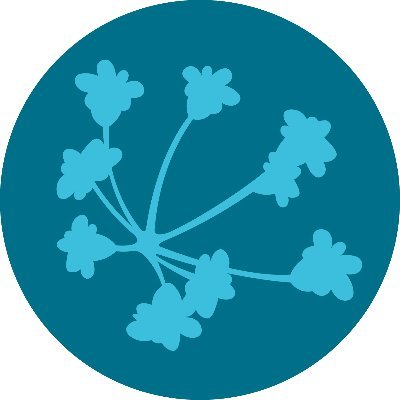
CSCCE @TheCSCCE
3K Followers 1K Following The Center for Scientific Collaboration and Community Engagement supports those building scientific communities. ✉️ [email protected] 🐘@[email protected]
Laura Olivieri Robles @laurrioli
442 Followers 687 Following ~Visual Storyteller~ @newmarkjschool alumna 🕵🏼♀️ y una physicist colegial @uprm✨📡
Annick L @annickhere
395 Followers 1K Following camera person. wordsmith. storyteller 🦋🌻 RT≠ Endorsements
Dr. Sarah Mullaly (sh.. @SarahMullaly
624 Followers 2K Following Scientist | T.rex enthusiast | views≠employer's
Sunil Sadasivan @sunils34
5K Followers 2K Following Building https://t.co/OUDtapGTYB. Past: dcto @corybooker, cto @buffer. he/him.
Mindy Weisberger @LaMinda
4K Followers 4K Following Science editor at @Scholastic, previously @LiveScience & @AMNH. @WGAEast member. Cynical girl (she/her). Opinions are my own. @[email protected]
Ali Amirhooshmand @VideoGameAli
177 Followers 120 Following Tech lobbyist, entrepreneur, surveyor of the skies
Alistair White @DrAlistairWhite
419 Followers 486 Following Secondary science teacher. #MIEExpert. Former geoscience researcher. Scuba Diver. Rock climber. Photographer. Guitarist. Dinosaurphile. He/him
Molly Peeples @astronomolly
9K Followers 956 Following Astronomer in the Science Policies Group @STScI & @jhuphysicsastro playing with galaxies & gas, real & fake. #Hubble pays the bills; opinions are mine. She/her.
Emily Conover @emcconover
7K Followers 2K Following Physics reporter at @sciencenews. "Absolutely the best journalist to talk to about neutrinos." She/her
Valerie Thompson @valbthompson
630 Followers 753 Following Scientist by training. Science editor by trade. Book Review Editor at @sciencemagazine. Tweets are my own.
Jia You @jiayoujy
595 Followers 316 Following Senior user experience designer @Oracle, previously interactive graphics & data viz @ScienceMagazine
Gabriel Popkin @GabrielPopkin
4K Followers 1K Following DC-area writer, mostly science and environment, specialties include climate, ecology, conservation, physics, forests, trees & soil.
Brent Grocholski @BrentGrocholski
248 Followers 102 Following senior editor at AAAS (@sciencemagazine)
@aaronclauset.bsky.so.. @aaronclauset
11K Followers 96 Following Professor of Computer Science @ U Colorado Boulder and External Faculty @ Santa Fe Institute. Inactive account. Find me 👉 @aaronclauset.bsky.social
Bob Service @RobertFService
1K Followers 141 Following Reporter for Science magazine covering chemistry, materials, energy, and computing. Inventor of the wheel (former life)
Kristen Mueller @kristenmueller
590 Followers 326 Following VP, Autoimmune Arthritis Research at @@ArthritisFdn. Immunology enthusiast, dog lover, mom to twins. My views are solely my own.
Dara O'Rourke @DaraORourke
2K Followers 604 Following Teaching at UC Berkeley, research on global production, experiments at Amazon (and previously GoodGuide), and continuous learning from two amazing kids.
Irene Newton @chicaScientific
7K Followers 3K Following Environmental functional genomics PI interested in all things microbial symbiosis. Prof at IUBloomington she/her @[email protected]
Elizabeth Pennisi @epennisi
991 Followers 79 Following
Corey S. Powell @coreyspowell
85K Followers 1K Following A curious human. Opening minds @openmind_mag. Casting pods with @BillNye. AKA: https://t.co/CpYNl1MZWR and @[email protected]
BlackPhysicists @BlackPhysicists
27K Followers 15K Following
Lizzie Day @lizzieday
1K Followers 2K Following Geophysics senior teaching fellow and undergraduate senior tutor at @ESEImperial. Fan of turquoise & deep Earth seismology. Profile: ✏️@piginatutu. She/herTwo decades of dengue surveillance reveal how different serotypes shape the risk of severe disease, colorful brain microdisplays could minimize the risk of tissue damage during neurosurgery, and more in the new issue of #ScienceTranslationalMedicine. scim.ag/6IE
Extreme heatwaves in China follow floods in Pakistan because of an upper tropospheric pathway tied to the Asian summer monsoon system, finds an analysis of more than 40 years of atmospheric data. Read more in this week’s issue of Science Advances: scim.ag/6IA
@wasswawilliam16 wanted to use technology to help the people in his community. Losing his grandmother to cervical cancer focused his efforts on cancer screening. Read his story and more of the best from @ScienceMagazine & science in today's #ScienceAdviser science.org/content/articl…
An elegant optogenetics tool streamlines research into inflammasomes, researchers elucidate how the inflammatory cytokine TNF-alpha reprograms the metabolism of T cells, and more in this week’s issue of #ScienceSignaling. scim.ag/6HG
I have to give Digit some credit: I don't think I'd recover so gracefully from being clobbered by a yoga ball. That story and more of the best from @ScienceMagazine and science in today's #ScienceAdviser: science.org/content/articl…
Every book has a biological story to tell. 📚 On #WorldBookDay, learn more about how researchers used ancient DNA and proteins to read the biology of books: scim.ag/6Ht
By losing genes related to cell death, elephants may be less likely to develop tumors—but more susceptible to infections. That story and more of the best from @ScienceMagazine and science in today's #ScienceAdviser: science.org/content/articl…
Today, #ScienceAdviser dives deep into new insights on the neuroscience of addiction from @scisignal and @ScienceMagazine. Plus, a plan for safely developing vaccines that spread themselves, another microbe to help battle mosquito-borne disease, and more: science.org/content/articl…
Extremely proud to share this work with mastermind @tbw_owl and @tbinoe representing an awesome collaboration across the labs of @VaziriLab, Jeffery Friedman, and @EricJNestler now out in @ScienceMagazine. science.org/doi/10.1126/sc…
I'm delighted to share a new Policy Forum article in @ScienceMagazine Developing transmissible vaccines for animal infections science.org/doi/10.1126/sc…. Thanks to @NSF for funding the workshop and to all of the participants for being co-authors
It has been an immense privilege and honor to review with John MacMicking and Carl Nathan in @ScienceMagazine the past 40 years of IFN-gamma research, and reflect on its neglected and potential role as a medicine science.org/doi/epdf/10.11…
New one from me in @ScienceMagazine, on why we mustn't see the risks of AI in apocalyptic terms
If you want a robot to explore intragalactic caverns, it makes sense to draw inspiration from Earth’s expert spelunkers: long-legged arachnids called harvestmen. That story and more of the best in @ScienceMagazine and science in today's #ScienceAdviser science.org/content/articl…
An electronic pill that zaps gut tissue as it moves through the digestive tract altered hormones in a test in pigs—exactly as @kramadi hypothesized it would. Still, he was kind of shocked by the success, he tells #ScienceAdviser: science.org/content/articl… @ScienceMagazine
Don't miss this week's issue of #ScienceTranslationalMedicine! A #DeepLearning platform doubles detection rates for early-stage esophageal #cancer, a large clinical study helps answer why #COVID19 is more severe in older adults, and more. scim.ag/6Dj
Researchers propose an acoustothermal transfection approach combining acoustic and thermal effects on cells to efficiently deliver multiple large plasmids while maintaining cell viability and easy scalability. Learn more in this week’s issue: scim.ag/6Dc
Yesterday, @ScienceMagazine's editor-in-chief faced members of Congress solo to answer their questions about scientific publishing. That story and more from Science and science in today's #ScienceAdviser: science.org/content/articl…
Congratulations to @cpiller, winner of the 2024 @NIHCMfoundation’s Trade Journalism Award. bit.ly/NIHCMAW24 🏆 Check out the winning stories below ⬇️ #NIHCMAwardsJournalism
Up to 1/5 of rheumatoid arthritis patients don't respond well to the usual drugs—and that might be because their pain comes from overgrown tissue. That story and more of the best from @ScienceMagazine and science in today's #ScienceAdviser: science.org/content/articl…
This week’s new issue of #ScienceSignaling has arrived! Scientists decode the biological and molecular impacts of cocaine addiction in the brain, a new study in zebrafish casts light on Wnt proteins and their receptors, and more. scim.ag/6Cy
